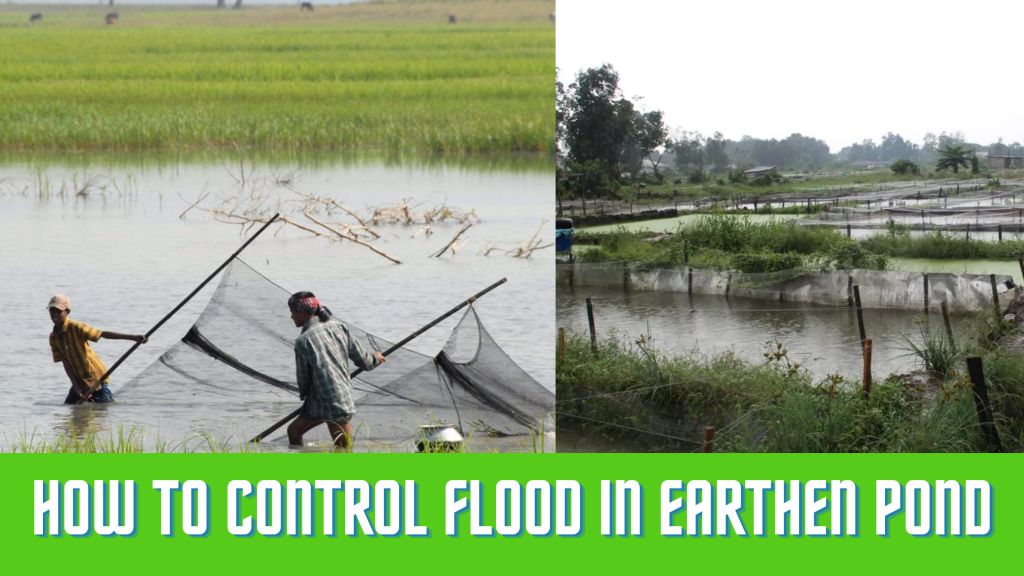How To Control Flood In Earthen Pond For Catfish Farming

Just like every other business, catfish farming has its challenges. Fish farmers sometimes encounter heartbreaking disasters, especially when using earthen ponds. In this post, we will show you ways to control flood in an earthen pond to have a good return on investment.
One unforeseen disaster that affects fish farmers, especially in Africa is flooding. There are advantages and disadvantages of catfish farming in earthen ponds but it seems that with flooding incidence, one wonders whether the advantages are good enough to continue using earthen ponds.
Floods can be catastrophic, causing severe damage to farmers’ investments and even resulting in huge losses in investment.
However, by implementing effective flood control measures, farmers can significantly reduce the risk of flooding in their farms.
In this post, we will discuss some of the most effective flood control measures that can be implemented in earthen fish ponds.
How To Control Flood In Earthen Pond
Here are some of the ways to control flooding in earthen fish ponds:
Proper Site Selection
The first step in flood control is to select the right site for the earthen pond construction. See our post on activities involved in earthen pond construction
The site should be located in an area that is not prone to flooding or is at least at a safe distance from any potential sources of flooding. This will help to minimize the risk of flood.
In choosing the site location, ensure that the site is on elevated ground to prevent water from accumulating and causing flooding. The higher the elevation, the better.
Construction of Dikes
Dikes are essential flood control measures for earthen ponds. They are constructed to prevent floodwaters from entering the pond and sweeping away all the fish.
It is better to build the dikes with good quality clay soil, compacted in layers and sloped at an angle to prevent erosion.
A proper drainage system should also be installed to prevent water from accumulating behind the dike and causing it to fail.
Installation of Drainage Systems
An efficient drainage system is necessary to remove excess water from the pond during heavy rainfall.
The drainage system should be designed to prevent the buildup of water pressure behind the dike, which can cause it to fail.
The system should be adequately sized to handle the expected volume of water and the drainage channels should be cleaned regularly to prevent blockages.
Regular Maintenance
Regular maintenance is a must to ensure that flood control measures are effective.
The dike should be inspected regularly for signs of erosion, cracks, or other damage.
Any issues dictated should be addressed promptly. This is to prevent the dike from failing during a flood. The drainage system should also be inspected and cleared at all times to prevent blockages and ensure that it is functioning correctly.
Emergency Preparedness
Despite all the preventive measures, floods can still occur, and it is essential to have an emergency plan in place.
The plan should outline the steps to be taken in case of a flood, such as how to evacuate the fish and how to repair any damage to the drainage system.
It is also crucial to have emergency equipment on hand, such as sandbags, pumps, and generators, to aid in flood control.
Use of Vegetation
Vegetation can be used as a natural flood control for earthen fish ponds. Planting vegetation around the pond can help to absorb excess water and reduce the risk of flooding.
The vegetation should be chosen carefully to ensure that it is compatible with the fish and does not cause any harm to them.
Use of Retention Ponds
Retention ponds can be used to control floods by capturing and holding excess water before releasing it gradually. This helps to prevent sudden and damaging flood surges that can damage the dike or harm the fish.
The retention pond should be designed and constructed to handle the expected volume of water. It should also be regularly maintained to ensure its effectiveness.
Conclusion
Earthen ponds are vulnerable to flood damage. Nevertheless, with careful planning and the implementation of effective flood control measures, the risk of damage can be significantly reduced.
Selecting the right site, constructing dikes, installing drainage systems, and performing regular maintenance are essential steps to take. Having an emergency plan and considering natural flood control measures such as vegetation and retention ponds are also crucial.
By following these measures, pond owners can ensure that their earthen fish pond remains functional and resilient to floods. You can watch this YouTube video to find out other information about earthen ponds.
For more insights, go to the home page




Thanks for the information as i also want to start with fish farming in the flood plains.